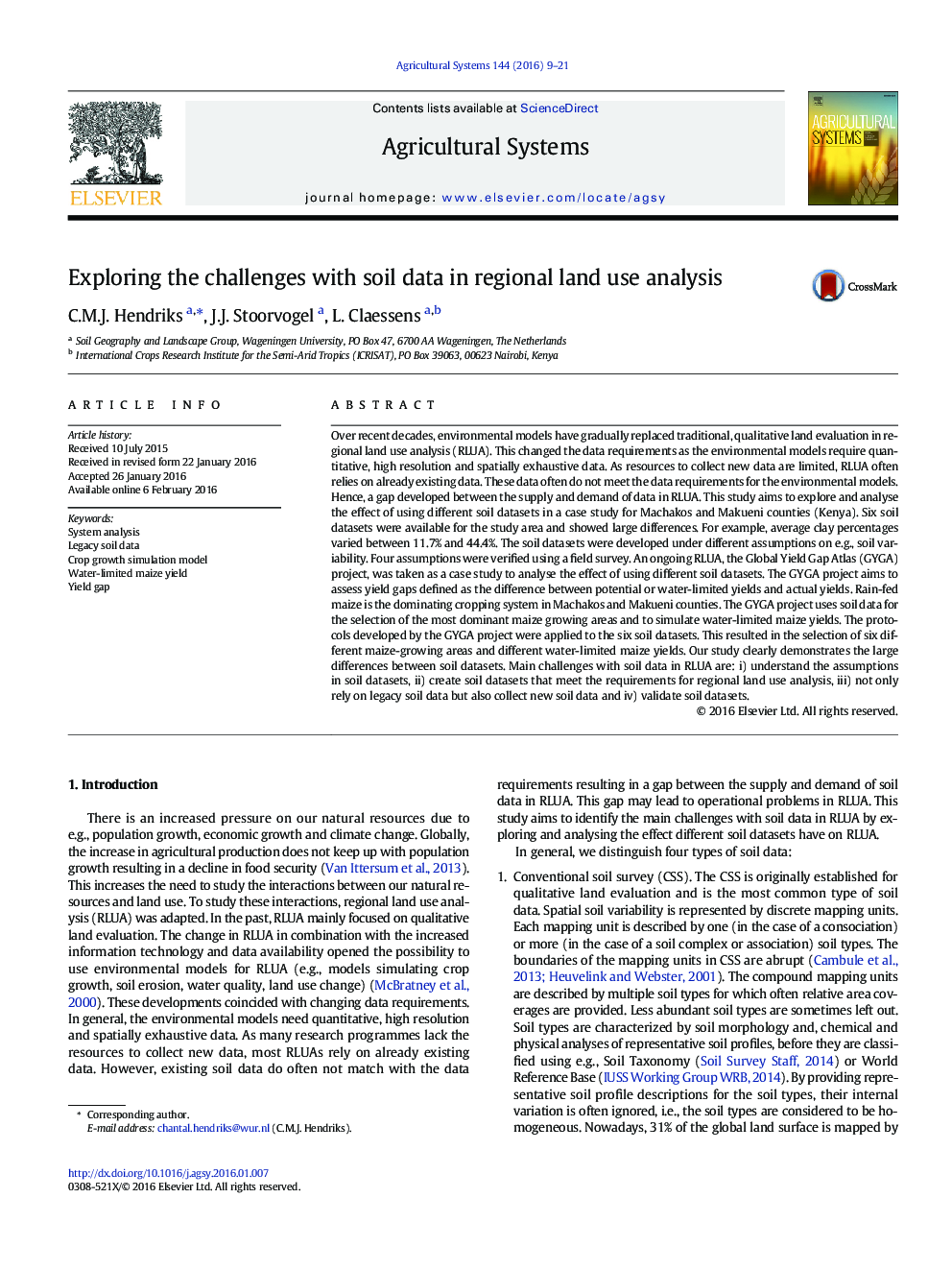| کد مقاله | کد نشریه | سال انتشار | مقاله انگلیسی | نسخه تمام متن |
|---|---|---|---|---|
| 4491136 | 1623226 | 2016 | 13 صفحه PDF | دانلود رایگان |
• Six soil datasets are shown to differ strongly due to the use of different data sources, assumptions and processing methods.
• Field tests showed that assumptions made to derive soil datasets are not always valid.
• The selection of the soil dataset for regional land use analysis largely influences the results.
• The quality of soil datasets is often unknown hampering their use and requiring validation.
Over recent decades, environmental models have gradually replaced traditional, qualitative land evaluation in regional land use analysis (RLUA). This changed the data requirements as the environmental models require quantitative, high resolution and spatially exhaustive data. As resources to collect new data are limited, RLUA often relies on already existing data. These data often do not meet the data requirements for the environmental models. Hence, a gap developed between the supply and demand of data in RLUA. This study aims to explore and analyse the effect of using different soil datasets in a case study for Machakos and Makueni counties (Kenya). Six soil datasets were available for the study area and showed large differences. For example, average clay percentages varied between 11.7% and 44.4%. The soil datasets were developed under different assumptions on e.g., soil variability. Four assumptions were verified using a field survey. An ongoing RLUA, the Global Yield Gap Atlas (GYGA) project, was taken as a case study to analyse the effect of using different soil datasets. The GYGA project aims to assess yield gaps defined as the difference between potential or water-limited yields and actual yields. Rain-fed maize is the dominating cropping system in Machakos and Makueni counties. The GYGA project uses soil data for the selection of the most dominant maize growing areas and to simulate water-limited maize yields. The protocols developed by the GYGA project were applied to the six soil datasets. This resulted in the selection of six different maize-growing areas and different water-limited maize yields. Our study clearly demonstrates the large differences between soil datasets. Main challenges with soil data in RLUA are: i) understand the assumptions in soil datasets, ii) create soil datasets that meet the requirements for regional land use analysis, iii) not only rely on legacy soil data but also collect new soil data and iv) validate soil datasets.
Figure optionsDownload as PowerPoint slide
Journal: Agricultural Systems - Volume 144, May 2016, Pages 9–21
